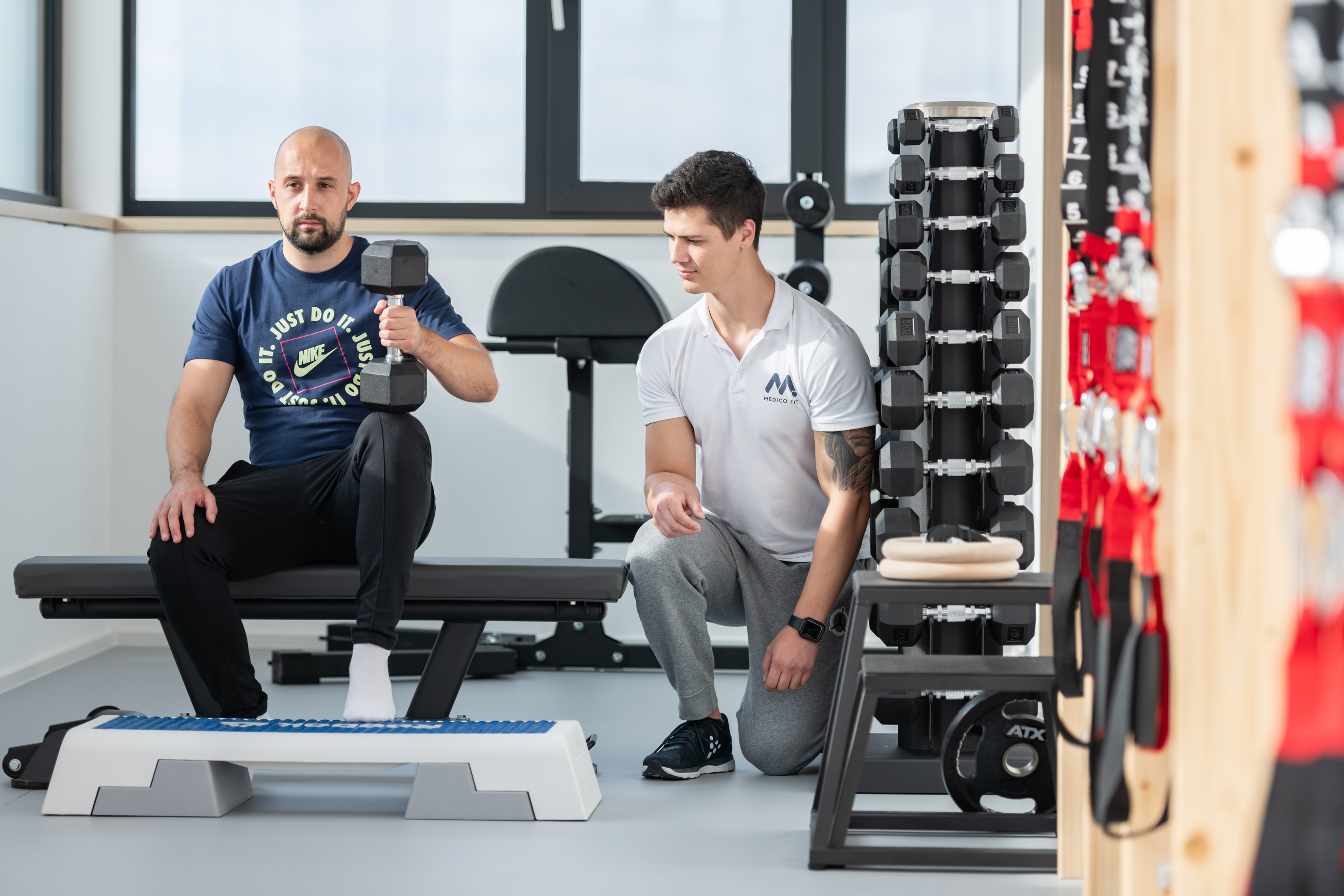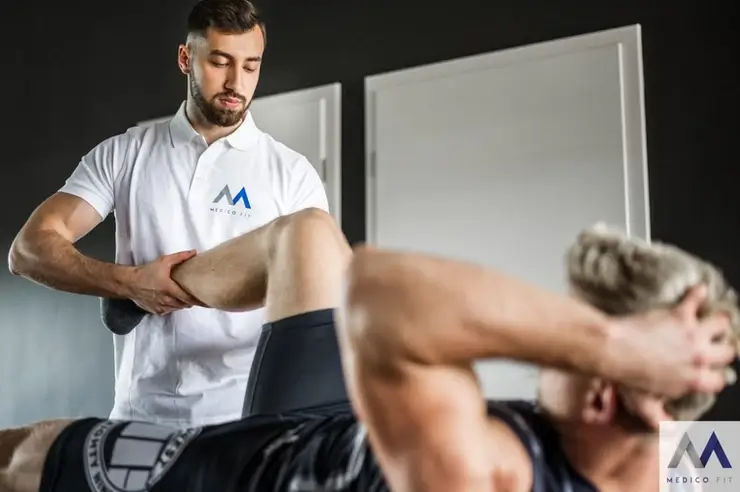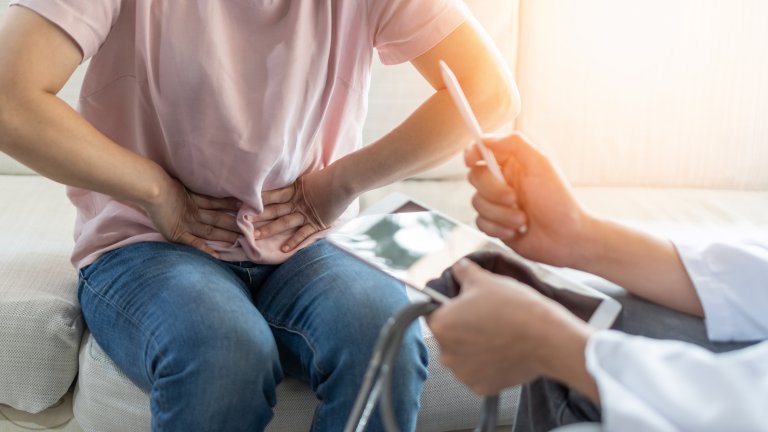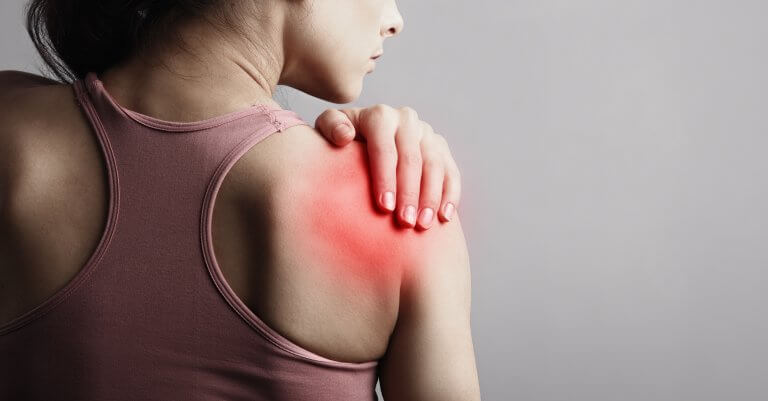If you have ever been injured and are looking for advice on what to do after an injury, we dare to bet that among all the suggestions you have received conflicting advice on the rehabilitation process. On the one hand, you were confronted with advice to rest and decompress the injured part of the body, while on the other hand, you were certainly advised to “keep moving”.
As a combination of modern science, rustic logic, and work practice often reveal, the truth is in the middle here too. Rest and pain management are necessary up to a certain point, and the affected part of the body needs to be strengthened by special rehabilitation exercises later in the rehabilitation process. In practice, most layman’s mistakes occur in the second phase of rehabilitation, when it is necessary to “do special flicks” if you do not opt for professional support.
In this article, we will define the importance of special strength exercises in rehabilitation and give you some guidelines when choosing professional support. I believe that I have enough successful experience to guide you to the findings of modern rehabilitation. The basis for rehabilitation and rehabilitation of injuries comes from modified strength exercises that are maximally adapted to the stage of the injury and to the physical capacity of the patient in a way that gradually improves the anatomical structure of the injured part.
The basis for the effectiveness of strength training lies in the scientific literature. For most injuries, the main risk factors include weakness of specific muscle groups, muscle asymmetries, poor endurance in the strength of specific muscles, poorly repaired previous injuries, and poor joint control.
Also, we will take you through some practical examples to help you understand why injury rehabilitation is inextricably linked to strength training.
How does the body achieve stability and why is stability crucial in rehabilitation?
The human body achieves stability basically through two mechanisms, a passive system and an active system of stabilizers. The passive stabilizer system is the connection between the skeleton, ligaments and tendons. The active stabiliser system is the individual muscles and muscle chains that, through activation and co-activation, perform corrective movements to keep the body above the center of gravity in motion. Ligaments interconnect the different bone structures and maintain the compactness of the skeletal system. The tendons, which also belong to the connective tissue, connect the muscles and bones and can be said to be the transition between the active and passive stabilization systems.
If you are wondering why we do not mention balance and whether it is synonymous with stabilization, we give you the answer now. Balance means the ability to maintain the position of the body without movement, while stability means the control of body positions during movement. Stability training is crucial in rehabilitation, especially strength training in unstable conditions.
How are the stabiliser systems related to injuries?
During movement, muscles absorb or absorb the forces acting on the body. If the muscles are strong enough and activated, this means that the joints are stable—as a result, the movement can be performed efficiently, and the forces are transmitted to the ligaments or ligaments only to a lesser extent. Efficient muscle activity means less intra-articular forces and movements. Complications occur if the muscular system is not sufficiently prepared for the activities you are performing. In this case, the muscles do not absorb the forces sufficiently, so they are transferred to the passive stabilizer system – the ligaments, which means high intra-articular (within the joint) forces.
As a result, micro-injuries occur in the joints, accelerating degeneration of structures such as cartilage, and with higher forces, there is the possibility of a traumatic injury such as a torn ligament. As ligaments are less well-circulated tissues compared to muscles, they do not heal as efficiently under excessive loads, and micro-injuries accumulate more rapidly in the tissue until inflammation, pain and degeneration occur.
The most illustrative example of the onset of degeneration is the occurrence of chronic pain in the Achilles tendon, known as Achilles tendinopathy. In this case, the soleus and gastrocnemius muscles are not strong enough to absorb the forces of the ground reaction during, for example, running.
As a result, the running technique breaks down and the load on the Achilles tendon is increased. Micro-damages start to form on the Achilles tendon and the collagen structure of the tendon becomes deformed. In the long term, tendon function deteriorates, pain occurs and the ability to withstand forces is impaired, creating a vicious circle that escalates the symptoms of tendinopathy at an accelerating rate.
The circle must be broken and the healthy tendon must be rebuilt. Rehabilitation of Achilles tendinopathy consists, in the first phase, of therapeutic techniques to promote the healing of micro-injuries. Magneto therapy, electrotherapy, shock wave therapy and other pain and inflammation management techniques are effective. Strength training is also an important part of rehabilitation, specifically strengthening the muscles of the triceps surae complex.
The systemic cohesion of therapies and strength exercises also forms the basis of the treatment of patellar tendinopathy, the symptom of which is pain below the knee—the quadriceps muscle needs to be strengthened. Similarly, the system of cohesion therapies and strength exercises is also applied to the occurrence of inflamed popliteal joints—it is necessary to strengthen the ankle flexors, but in this case, we are extremely cautious when returning to running and jumping.
Strength training is the basis of progressive loading of the injured part of the body and is the cure that solves the causes of the injury.
Rehabilitation exercise speeds up the healing process of injuries
Tendons and ligaments do not have a good blood supply. Healing at the level of tendons and ligaments takes place through different mechanisms than muscle healing. Ligaments contain tenocytes, which detect mechanical damage to the cell matrix and react by producing new collagen fibers (Andarawis-Puri et al., 2015).
Constant and appropriately dosed exercise loading is essential for healthy tendons because mechanical loading stimulates healing and therefore leads to long-term improvement in tendon structure and function. Exercise loading of connective tissue also increases the concentration of myofibroblasts in the tendon, which are thought to be crucial in remodeling tendon structure (Szczodry et al., 2009).
Similar mechanisms of load-based healing apply to muscle tissue – its healing is also accelerated by exercise, but the mechanism is different. Since muscles are more vascularised than tendons, exercise accelerates healing by increasing blood flow in the muscle tissue. By increasing blood flow, the muscle is provided with sufficient oxygen and, consequently, sufficient energy to allow the myofibrils (muscle cells) to heal (Józsa et al., 1980).
Let’s return to the changes in the tendon described above, which occur under load or during strength training, only this time looking through the lens of the uninjured tendon. Let’s touch on the area of prevention or pre-rehabilitation. The tendon itself, which is well-trained, carries a large number of myofibroblasts (cells involved in wound and injury healing), which means the potential for collagen remodeling and, consequently, less exposure to injury. In other words, the more the tendon is trained, the more new collagen fibers or fresh connective tissue is formed.
A tendon that is not subjected to strength training or is not trained carries fewer myofibroblasts and a higher risk of rapid onset of injury when subjected to a load that will, in this case, constitute a shock. Minor micro-injuries gradually lead to connective tissue inflammation and pain symptoms.
Similar principles of soft tissue reaction to a dosed load also apply to muscles, which act as an active joint stabilization system. In order to withstand the stresses of everyday life, muscles need to be strong enough to ensure that the activities do not cause inflammation or shock your body. By exercising your muscles, they become stronger through the mechanism of hypertrophy (cell growth) and thus can more easily withstand the stresses of the workplace, sporting activities, etc.
Injury rehabilitation and strength training are inextricably linked. Strength training has been shown to accelerate the healing process of tissues, be it tendon or muscle – it is, therefore, a major part of rehabilitation training after injury. Muscle weakness is considered to be one of the main risk factors for injury, which is why strength training is also a major means of injury prevention or pre-rehabilitation.
Properly dosed strength training loads cause hypertrophy (cell growth) in the muscle and an increase in the number of myofibroblasts in the tendon, which increases the load-bearing capacity of the tendon, resulting in tendon hypertrophy. A trained tendon has a lower risk of injury, inflammation and pain.













